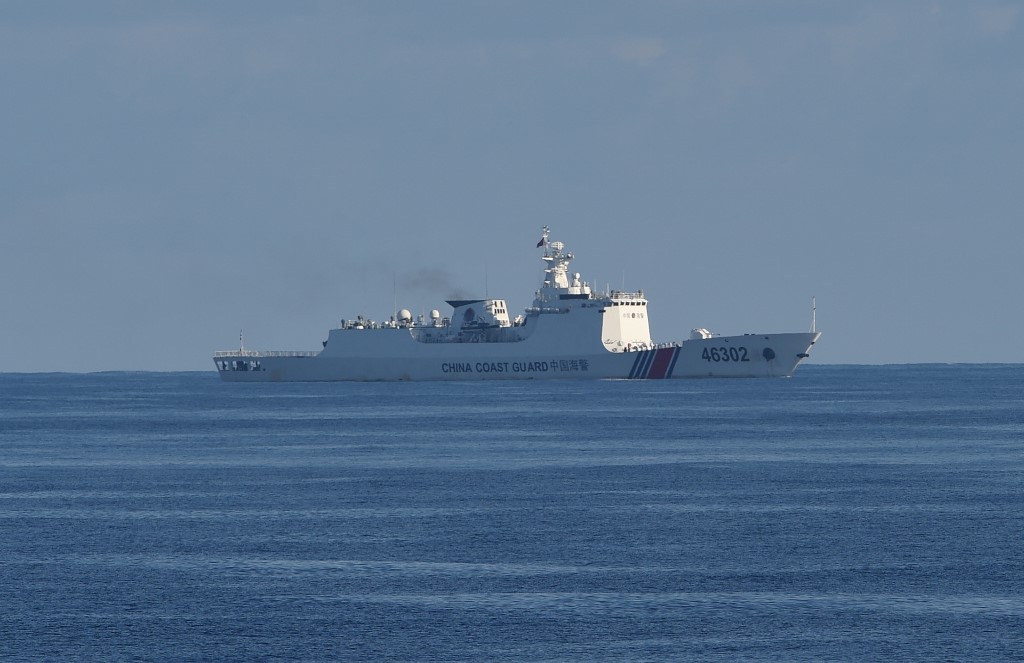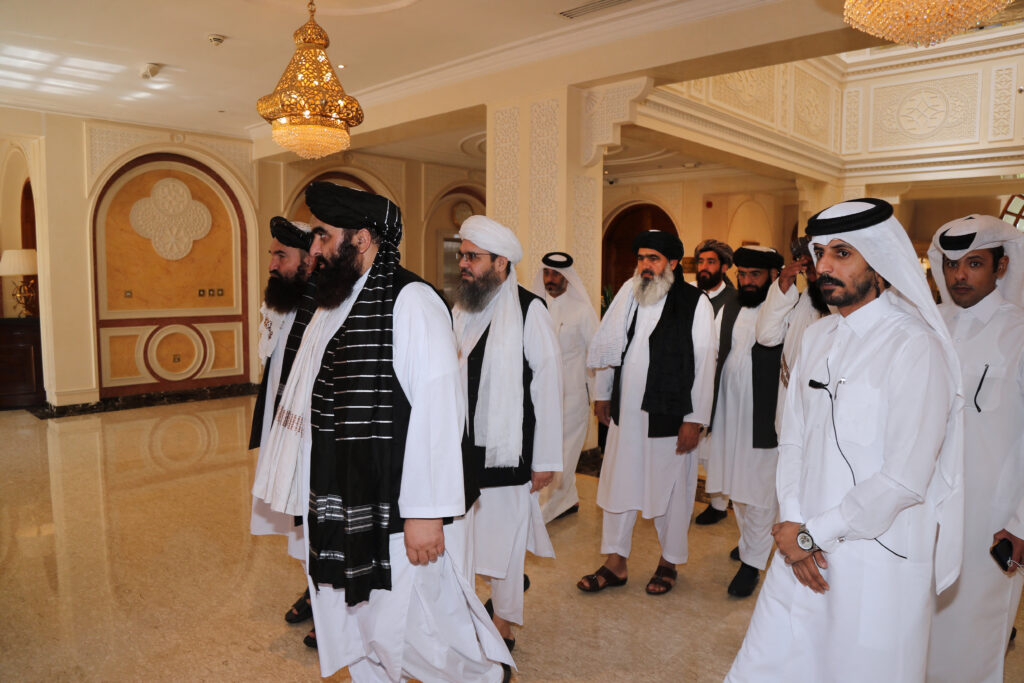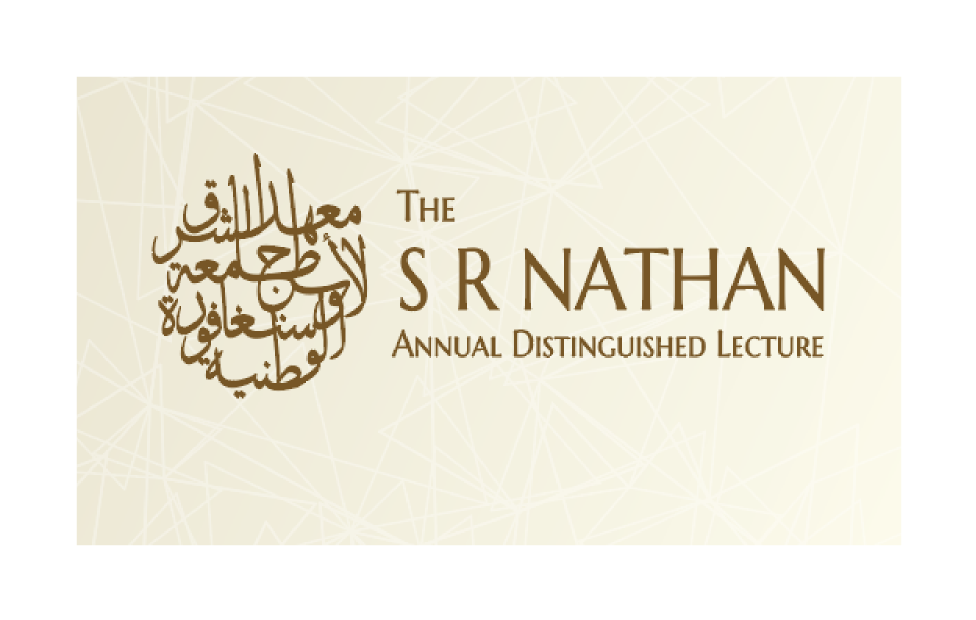
- 19 May 2020
Security and Maritime Conflicts in the South China Sea
Abstract
South-east Asia is a key arena in the unfolding United States–China strategic rivalry. In this context, events in the South China Sea are instructive. Just recently, US warships, joined by an Australian Navy craft, faced off with Chinese vessels off Malaysia. What do events in what Beijing claims as its “lake” tell us about the American and Chinese designs in the broader strategic context? Singapore’s Prime Minister Lee Hsien Loong has said “the world is at a turning point” as US–China tensions grow. How will the rivalry play out elsewhere, including the Persian Gulf and beyond?
Join us for this public talk on 19 May, 3.00pm to 4.30pm, which will be conducted online via Zoom. All are welcome to participate. An e-invite will be sent to you near the event date.
This event is free, however, registration is compulsory.
Image caption: A Chinese coastguard ship sailing along the boundaries of a joint exercise between Philippines and the US in the South China Sea on 14 May 2019. Photo: Ted Aljibe / AFP.
Listen to the full event here:
Watch the full event here:
Read Event Summary:
By Sara Loo
Intern, Middle East Institute, National University of Singapore
Mr Bilahari Kausikan
Chairman
Middle East Institute, National University of Singapore
There is nothing unusual about the US–China competition today, which is inherent in US–China relations and traditional great power competition. Except for short and exceptional periods such as the Korean War, the Vietnam War and the US invasion of Iraq in 2003, the United States has been the offshore balancer.
The US’s offshore role has been made clear through the 1969 Nixon doctrine: “You all have to take more responsibility for your defence from now on; I will not be involved in the mainland of Asia anymore.” The US’s role has oscillated between fear of entanglement between allies if too aggressive, and fear of abandonment if too passive. You have to understand both the waves and troughs of US policy but not mistake either for a permanent condition.
With that broad framing in mind, the situation in the South China Sea is largely a stalemate. The US will neither be able to make China scale down its ridiculously wide claims of over 80 per cent of the South China Sea nor make China dig up the artificial islands it had constructed (or in time, stop China from deploying military assets on the islands). China, on the other hand, will not be able to deter the US from operating in, over or through the South China Sea unless it is willing to risk war, which is unlikely — the best outcome of war would be a stalemate, which would be disastrous for the Chinese Communist Party.
Those islands are, from a military point of view, quite useless. The claims are much more political than military or strategic. They are meant to intimidate other claimant states and to put meat on the bones of China’s new revanchist narrative on which the Communist Party justifies its rule (that for 100 years, it has been humiliated and it is now going to take what it has lost back. In reality, however, most of what was lost — the Russian far east, Mongolia and Taiwan — cannot be gotten back without risking a big war with the US. A war may occur, but if it does, it would occur by accident, not by deliberate design.).
Looking at the idea of “retreat” and “commitment to internationalism” very carefully, firstly, given President Donald Trump’s explicit intentions of competing robustly with China and Russia, his policies cannot be described as a retreat. Secondly, US policy oscillates between emphasising multilateralism and uni/bilateralism; commitment to free and fair trade; between many poles on many issues.
Looking at the whole 20th century, the period of clear American commitment to internationalism was very short: 20 years (1989–2008/9). In the early part of the 20th century, it made sporadic interventions that were decisive , such as in the First World War and Second World War — but American commitment to internationalism was more often only half an equation, never uncontested. It was a short exceptional period that we now mistake for the norm.
As for the American position on the South China Sea, it has been a reluctant player. When it first became a major issue in the mid-1990s, Asean had to work very hard for the US to declare a position. Upholding a rules-based order is a relatively new development in US policy to the South China Sea; the oscillation then was on the unilateral side before that (who’s going to stop me, I don’t care who it belongs to — trivial).
Today, there is less difference than thought between China’s and the US’s positions on what is allowed in territorial waters, and on what is allowed on the high seas. A country’s interpretation of international law is a function of its capabilities.
When we look at US–China competition, we pay far too much attention to the sea. There is nothing unusual about the Chinese trying to expand themselves from being a continental power to being a maritime power; historically, there has not been a major trading nation that was not also a maritime power. China is still very far behind the US — it is trying to catch up with a moving target.
Competition in the South China Sea is more or less a stalemate. We don’t pay enough attention to what is happening on land. The dams that the Chinese are constructing in the upper reaches of the Mekong originate in indisputable Chinese territory, which give them a strategic advantage that has been understudied. An issue of greater potential strategic significance is seen from the recent satellite photographs which show that the droughts that have plagued lower Mekong countries may have been caused by or contributed by Chinese damming activities in the upper reaches.
Dr Collin Koh
Research Fellow
Institute of Defence and Strategic Studies
S Rajaratnam School of International Studies, Nanyang Technological University
Commentaries that argue that there is a new pattern on what China is doing in the South China Sea, such as its installation of new missile stations and creation of two separate administrative districts for the Paracel and Spratly islands as well as new coercive activities, are sensationalist. The only new thing is the context of the pandemic, which gives China a window of opportunity to pursue what it had wanted to since the coming to office of President Xi Jing Ping — securing China’s maritime sovereignty and rights.
Since 2012, China has already started ramping up its muscular approach in the South China Sea. Understanding recent moves in the context of the Covid-19 outbreak, they are deemed as necessary to distract public attention in China from the Chinese Community Party’s handling of crisis by rallying the nation around a nationalist agenda; a form of externalisation. As far as the People’s Liberation Army is concerned, it needs to be proactive amid speculations on whether the military was involved in the handling of the Covid-19 crisis and how ready it was in flashpoints like the South China Sea.
The coronavirus pandemic has caused long-term disruptions, including to Mr Xi Jing Ping’s idea of a Chinese dream: becoming a prosperous, middle income nation in a decade’s time. Notwithstanding propaganda, undercurrents include having to deal with bad consumer sentiments despite a pick-up in exports and unemployment levels, which has resulted in a setback to the nation-wide poverty alleviation goal. Next year, being the centennial of the party, external achievements might be necessary if the domestic situation is not going very well.
Contrary to commentaries that China is seeking to unilaterally exploit resources in disputed waters, its goal is ultimately to attain joint developmental deals: in early 2000s with Vietnam in the Gulf of Tonkin, recently with the Philippines, and now it is seeking arrangements with other claimants such as Malaysia for example. China is using the current timely window of opportunity — with Asean claimants dealing with the coronavirus outbreak, the US military facing problems promoting a forward-deployed posture in the region, and the suspension of code of conduct talks — to strengthen its position to have stronger bargaining leverage over other parties when talks restart.
In terms of the broader strategic rivalry between China and the US, we see a stalemate. Neither power has any incentive on rolling back activities. Doing so would undermine China’s internal legitimacy and the US’s commitment to a free and open Indo–Pacific that the Trump administration has been advocating; the South China Sea is one of or the only litmus test to this strategy. Thus, they would not concede on the South China Sea.
Both powers have been posturing and counter-posturing but they have no appetite for armed confrontation with each other. Compared to the immediate post-Cold War decade, security building mechanisms are more developed now, which serve as pressure valves to prevent military confrontation. Both countries grapple with predominantly domestic concerns.
Dr Abdullah Baabood
Visiting Research Professor
Middle East Institute, NUS
The US moved into the Gulf in the 1970s to replace Pax Britannica and got a lot more entangled in the Middle East. With the Obama administration’s “pivot to Asia”, the Gulf states started to take matters into their own hands and were more militarily active, wanting to become less reliant on the United States.
It is no secret that the Gulf states are in conflict among themselves, within the Gulf Cooperative Council (GCC), between the GCC and Iran, Iraq and the war in Yemen. The region today can be described as “a total chaos”. The US is aware of this and is not ignoring the difficulties. It is not pulling out as it is still dependent on security and stability of the region (as oil is a strategic commodity, even if the US is not importing as much as it used to). There is nonetheless a recalibration of US policies — to get regional countries and international countries that would benefit from the region more involved.
How does China come into play? And Russia? The US wants to keep them out despite them having gained inroads into the region. China already has two bases in the region: Djibouti and Gwadar, which is close to the Strait of Hormuz. China is becoming more dependent on the Gulf.
Russia’s proposal, which they wanted to be implemented through the UN Security Council, which is more comprehensive and inclusive, was brushed aside by the US. Iran’s Hormuz “Coalition for Hope” project calls for the withdrawal of international powers from the region and the creation of its own security architecture, but it is not going anywhere; the American security umbrella is paramount, especially for the smaller Gulf states. The French started its own initiative through the European Union (maritime awareness) to protect the Strait of Hormuz. Then there is the US Operation Sentinel involving Australia, Bahrain, Israel, United Arab Emirates, Kingdom of Saudi Arabia and the United Kingdom to protect the strait, and the Middle East Strategic Alliance (Mesa) should not be forgotten too.
This messy picture is going to continue for a long time because of the conflict between Iran–US and among some of the regional states. If there is a change in leadership in November, we may see some US–Iran rapprochement: some resemblance of the Joint Comprehensive Plan of Action (JCPOA), and a much more robust regional structure that includes all the regional countries and international powers. But as far as the US is concerned, it would want to keep Russia and China out.
About the Speakers

Mr Bilahari Kausikan
Chairman
Middle East Institute, NUS
Dr Collin Koh
Research Fellow
Institute of Defence and Strategic Studies
S Rajaratnam School of International Studies, NTU
Dr Abdullah Baabood
Visiting Research Professor
Middle East Institute, NUS
Mr Bilahari Kausikan is the chairman of the Middle East Institute, an autonomous institute of the National University of Singapore. Mr Kausikan was permanent secretary of Singapore’s Ministry of Foreign Affairs from 2010 to 2013, having served as second permanent secretary since 2001.
He was subsequently ambassador-at-large until May 2018. His earlier appointments at the foreign ministry include deputy secretary for South-east Asia, permanent representative to the United Nations in New York, and ambassador to the Russian Federation.
He was educated at Raffles Institution, the University of Singapore and Columbia University in New York.

Research Fellow
Institute of Defence and Strategic Studies
S Rajaratnam School of International Studies, NTU
Dr Collin Koh is a research fellow at the Institute of Defence and Strategic Studies, which is a constituent unit of the S Rajaratnam School of International Studies, based in Nanyang Technological University, Singapore. He has research interests in naval affairs in the Indo-Pacific, focusing on South-east Asia.
Dr Koh has published several op-eds, policy- and academic journal articles as well as chapters for edited volumes covering his research areas. He has also taught at Singapore Armed Forces professional military education and training courses. Besides research and teaching, Dr Koh also contributes his perspectives to various local and international media outlets and participates in activities with geopolitical risks consultancies.

Visiting Research Professor
Middle East Institute, NUS
Dr Ba Abood is an Omani academic and researcher, and the former director of the Centre for Gulf Studies at Qatar University. He holds a PhD in international relations from the University of Cambridge, a master’s degree in international relations from the University of Kent and an MBA from Strayer College, USA.
His research interests are international relations; the international political economy; Gulf affairs; and economic, social and political development in the GCC countries and their foreign relations. Baabood has taught and conducted research at several universities and institutions in Europe, and has published numerous books, articles and conference papers.




